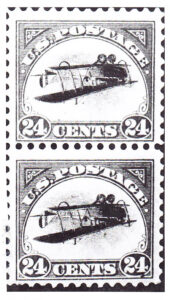Rarities attract the most attention in the stamp world. They are really no more interesting than common stamps, but they receive more press. Dollar values are something that everyone can understand. Philatelic speakers who go before nonphilatelic groups to talk about philately and stamp investing usually find themselves ignored until dollar amounts are put on the items. Then the speaker finds an active interest: “$10,000 for that, wow!”
Probably the foremost popular rarities of philately are the 1918 United States Airmail Invert, the 1852 British Guiana One Cent Magenta, the two-cent Hawaiian Missionaries, and the Mauritius “Post Office.”
Few people get the kind of shock William Robey did one day in 1918 when he walked up to the stamp counter at the Washington Post Office and asked for the best centered sheet of the new twenty-four-cent Airmail stamp that they had. Robey was a stamp collector, though as a twenty-six-year-old stockbroker’s clerk he had little money for his hobby. But he had made arrangements with friends to send them covers franked with the new stamp, along with some mint copies from the sheet he was going to buy. They never got them.

The sheet that the postal clerk handed to Robey had the center inverted. Robey saw it right away; the clerk did not. United States law is very clear on this matter. Anything that you buy from the post office is yours to keep, but if the postal clerk discovers the error before you have paid for the item, he is required to take it off sale and return it to the postal inspectors. Robey’s hands shook as he paid for the sheet. After removing it from the counter, he asked the clerk if he had any more items like this one, with the airplane upside down. The clerk asked him for the sheet back, now discovering the error. When Robey refused, the clerk called his superior. Soon post offices from New York to Washington were closed while clerks shuffled through stacks of stamps attempting to find additional error sheets to that they could be destroyed before issuing to the public.

